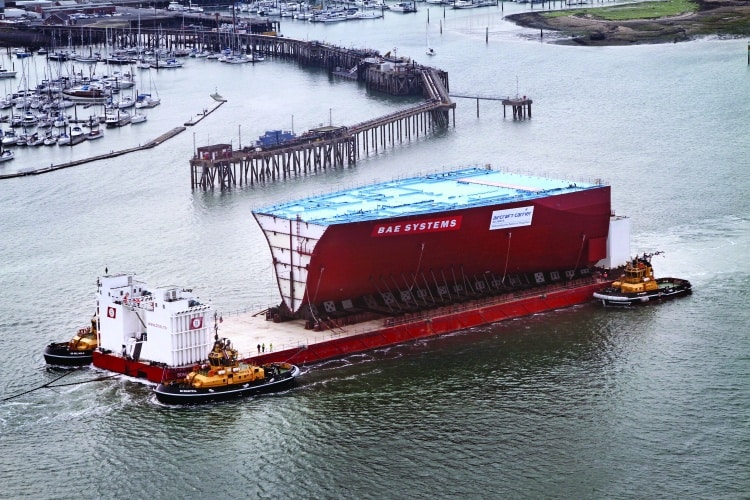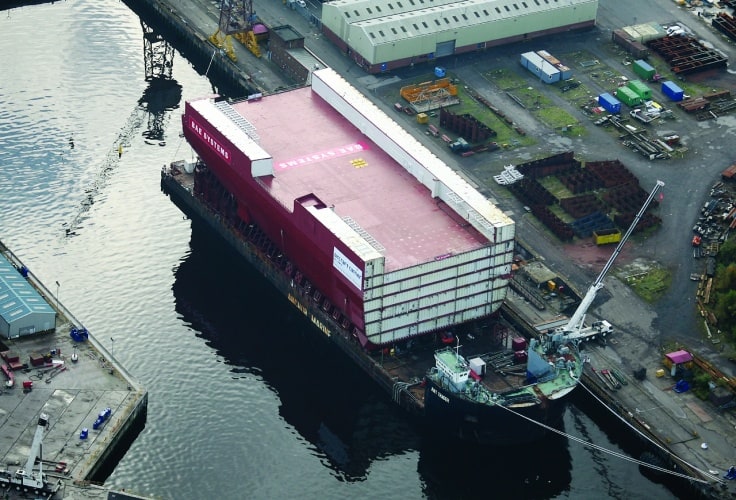Your questions answered: HMS Queen Elizabeth aircraft carrier
After five years of construction at six different shipyards, one of the UK’s most-challenging engineering projects is almost at an end. In just a couple of months’ time, HMS Queen Elizabeth — Britain’s first new aircraft carrier in more than 30 years — will float out of its dry dock in Rosyth, Scotland.

For the latest of our reader Q&As, we put your questions on the design and production of the new ship to BAE System’s David Downs, engineering director of the Aircraft Carrier Alliance (ACA).

The ship was originally expected to weigh 65,000 tonnes, but is now thought to have a displacement of 70,600 tons. What caused this discrepancy?
The displacement of the Queen Elizabeth-class aircraft carriers upon delivery to the customer will be approximately 65,000 tonnes, which is the same as the predicted displacement when we started the manufacturing phase, although the design allows for weight growth in excess of 70,000 tonnes through the service life of the ship due to upgrades.

What was done to make the ship as manoeuvrable as possible? How does it compare to modern cruise liners and does it make similar use of things such as side thrusters and electric drives?
Register now to continue reading
Thanks for visiting The Engineer. You’ve now reached your monthly limit of premium content. Register for free to unlock unlimited access to all of our premium content, as well as the latest technology news, industry opinion and special reports.
Benefits of registering
-
In-depth insights and coverage of key emerging trends
-
Unrestricted access to special reports throughout the year
-
Daily technology news delivered straight to your inbox










Water Sector Talent Exodus Could Cripple The Sector
Maybe if things are essential for the running of a country and we want to pay a fair price we should be running these utilities on a not for profit...